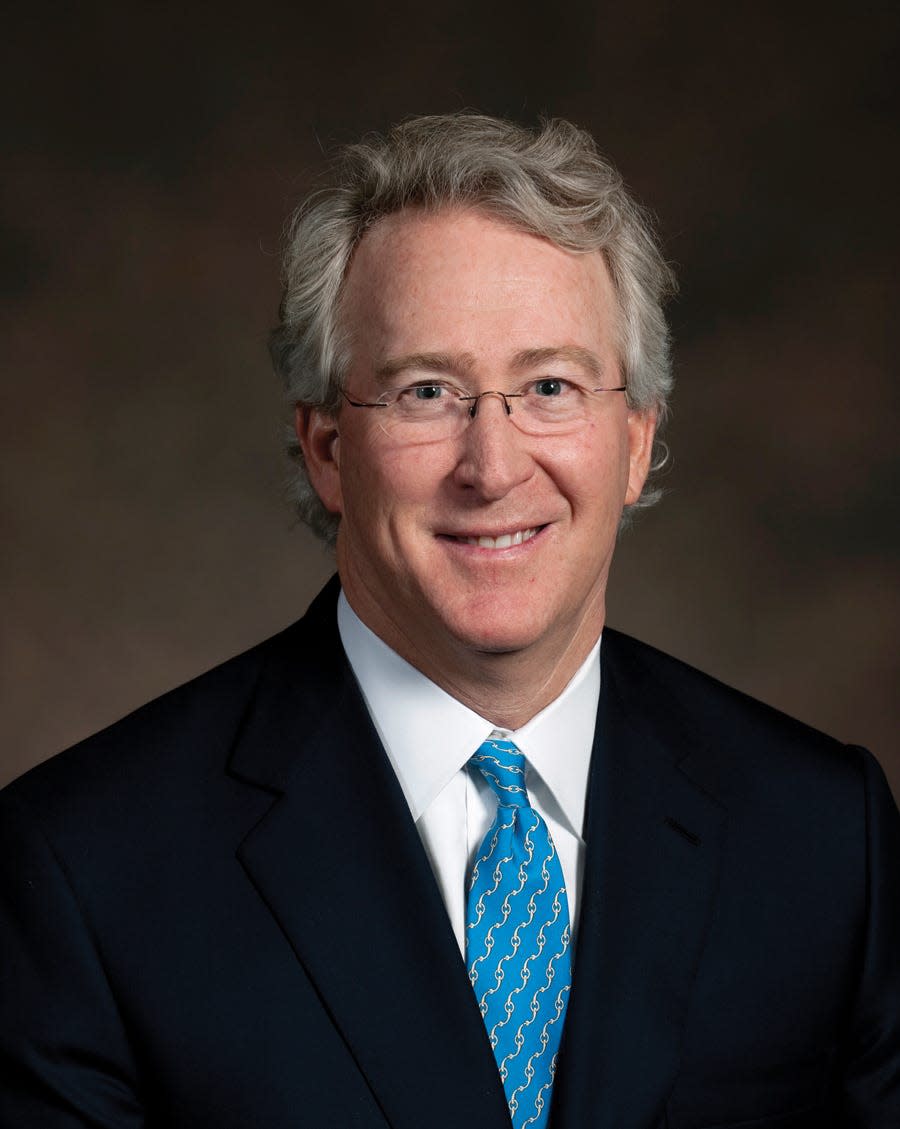Chesapeake Energy's history ahead of merger reflects volatility of the oil and gas industry
- Oops!Something went wrong.Please try again later.
The quality of Oklahoma City's economic health has been evaluated using energy companies headquartered here as a barometer for decades.
There's no doubt the economic fortunes of Chesapeake Energy, co-founded more than 40 years ago by Aubrey McClendon and Tom Ward, have served as a bellwether for other businesses across the community while the domestic and international natural gas markets have changed over time.
At least one Oklahoma analyst believes Thursday's announcement of Chesapeake's plan to acquire Southwestern Energy, another large natural gas producer in North America, bodes well for the industry's future both internationally and here at home.
But domestic and global energy markets can be fickle, as newsworthy events involving Chesapeake over time have shown.
Here's a recap of news items about Chesapeake that have caught the attention of Oklahoma City area residents over the years.
Chesapeake Energy in Oklahoma City through the years
1989: Chesapeake Energy Corp. is founded by Aubrey McClendon and Tom Ward with about 10 employees, with offices established in a single, 6,000-square-foot office building bought for $240,000 in the Three Chopt Square office park on the southeast corner of NW 63 and Western.
1993: The company launches an IPO to become publicly traded after buying up the entire office park to use as its headquarters.
1996: Chesapeake employs 344 before a collapse in natural gas prices sends its stock value plummeting. Despite that, it begins buying adjacent land with plans to expand its corporate headquarters the following year.
More: Chesapeake merger with Southwestern, with HQ in OKC, will 'redefine' natural gas sector
2000: Chesapeake begins building new, Georgian style brick buildings for its expanded campus and begins buying nearby office and warehouse properties, anticipating future growth. The company employs 677.
2003-2007: Chesapeake spends billions to acquire assets in nearly every U.S. major energy field, making it the second-largest domestic producer of natural gas, trailing only Exxon. In 2005, Chesapeake employs 1,718 employees and buys retail properties including Glenbrook Centre, 1140 NW 63, for $8.5 million. It also buys Nichols Hills Plaza for $27.5 million and Metro Center, 6418 N Western, for $1.85 million and spends millions more to acquire other nearby properties as it prepares to build Classen Curve and a second shopping center, the Triangle.
2006: Ward leaves Chesapeake and buys Riata Energy for $500 million, renaming it SandRidge Energy.
2008: The Great Recession causes energy prices to slump, forcing McClendon to sell nearly all his Chesapeake stock and prompting Chesapeake's board to offer him a financial lifeline in the form of a $75 million bonus.
2010: Chesapeake employs 8,200 and Classen Curve opens.
2012: McClendon loses control of Chesapeake's board because of debt pressures. The board appoints Archie Dunham, Conoco Inc.'s former CEO as chairman and announces a review of McClendon's financial deals.

2013: McClendon leaves Chesapeake $13 billion in debt. Doug Lawler is named its CEO. Lawler works with his team the following year to sell Classen Curve and Nichols Hills Plaza.
2014: Chesapeake employs about 10,800 before selling subsidiaries and cutting its workforce by about half as it works to restructure its debt.
2015: Chesapeake announces more layoffs, reducing its workforce to about 4,400, with 2,500 in Oklahoma City.
2019: Chesapeake Energy makes a hard-left turn under Lawler's leadership to become a more-balanced producer of natural gas and oil with its $4 billion acquisition of WildHorse Resouce Development Corp. But before the end of the year, it announces it might have to declare bankruptcy because of ongoing debt issues.
2020: Chesapeake files for bankruptcy in June.
2021: Chesapeake emerges from bankruptcy and lays off more employees, reducing its count companywide to 1,300. Lawler also leaves the company as its CEO, with Mike Wichterich, who joined Chesapeake's post-bankruptcy board, serving as its interim CEO. Later the same year, Nick Dell'Osso Jr., the company's chief financial officer for more than a decade, is named as its new CEO. Chesapeake also buys natural gas producer Vine Energy for $2.2 billion in November of the same year.
2024: Chesapeake announces its deal to acquire Southwestern Energy in an all-stock deal worth $7.4 billion, with expectations the deal will close later the same year.
This article originally appeared on Oklahoman: A look at Chesapeake Energy roller coaster history ahead of merger

